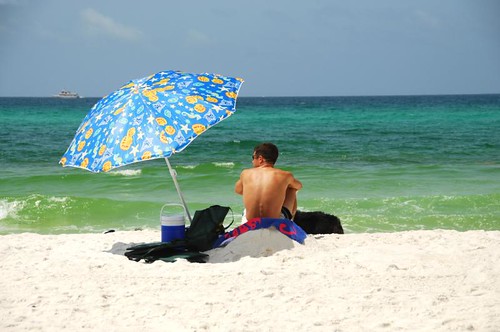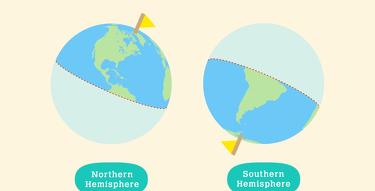Summer vacation is an exciting time for children and adults alike. Many people travel to other places, play outside, and engage in water sports (swimming, surfing, sailing, etc.)

“Summer Vacation” by faungg’s photos is licensed under CC BY-ND 2.0 
“Summer vacation 2006 in Italy -Firenze-“ by skyseeker is licensed under CC BY 2.0 
“Daisy & Sunny play chasing #goldenretriever #catahoulaleoparddog” by dylanboyce is licensed under CC BY-NC-ND 2.0
Like in Japan, there is a long summer vacation in Anglophone countries, but it may be at different times. In other countries, summer vacation is at different times because of seasonal and cultural differences.
One reason for different summer vacation times is the differences in seasons, especially between the northern and southern hemispheres. In Australia, New Zealand, and South Africa, summer is in December, January, and February. (This means that people celebrate Christmas and New Year’s Day during summer vacation in these countries.)

Traveling further from the equator also affects summer vacation. For example, in the southern UK, summer break starts in July or August like in Japan. But in Scotland and North America, which are further north, summer vacation is earlier in the year. Summer break in Canada and the USA usually starts in May or June and goes until August or early September. Winter breaks in North America may also be earlier and longer because of expectations for snowy weather. In return, there are fewer weeks-long vacations at other times; only spring break is a week-long holiday.
Another reason is a difference in cultures: Similar to Japanese universities, there is a long summer vacation in Anglophone countries, but it may be at different times and lengths. This is due to different cultural values.
In Japan, spring semester starts in April, after the new lunar year, sakura season, and spring planting. There is a short break in May for many state/nature holidays (Golden Week). Then the semester ends in July, allowing a break for the heat, harvest, and respect for the ancestors. University classes begin again in October, there is a short break in winter for the global new year, and classes end near or after Lunar New Year. In Anglophone countries, however, most people do not celebrate Lunar New Year or cherry blossoms, but many people celebrate Easter and Christmas. As a result, there is usually a holiday near the end of March or early April and another one in mid- or late December to early January. (Note: New Zealand does not follow this pattern.)
There are also cultural differences in the spacing of vacations. In the UK, Australia, and New Zealand, there are 4-5 periods of vacation. Each is 2-4 weeks in length except summer vacation, which is 5-8 weeks in length. However, the USA has very long summer breaks, plus the long winter break, so the spring break is fairly short (usually one week). Thanksgiving break is also short (usually 2-3 days), and there are no other full weeks off for holidays. That being said, there are various single-day holidays spread out through the year, and some districts have “snow days”. Canada, meanwhile, has a normal 8-week summer vacation, but a shorter 2-week December vacation and a 2-week spring vacation like other Anglophone countries, plus various single-day holidays spread out through the year. This means that Canada has more days of school than the USA. (Canada requires a minimum of 194 school days; the USA requires at least 180.)
For more information about school holidays, see these sites:
- Australia
- Canada
- New Zealand
- UK
- USA (Example school district – U.S. school calendar varies by city/district)
Read more about summer vacation in other countries here: Summer Break 2021 – When and Why Is It Observed?